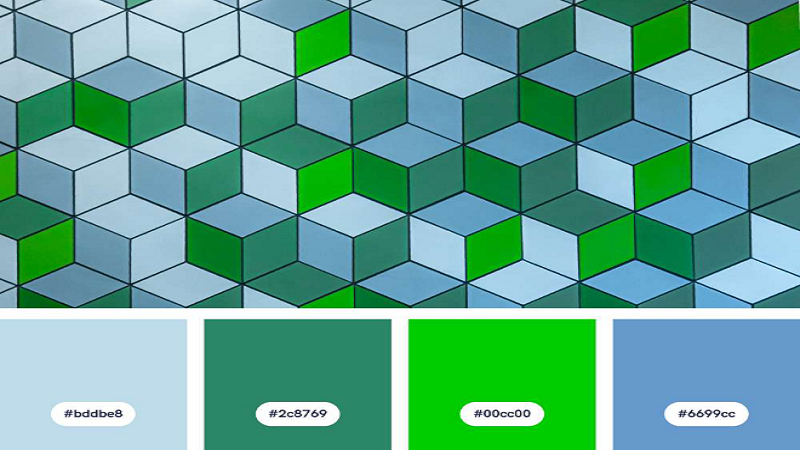Green, a color that symbolizes nature, renewal, and harmony, is a timeless favorite in design. Its versatility makes it ideal for a variety of applications, from weddings to branding and home décor. A Different shades of green color palette can bring warmth, vibrancy, or elegance to any setting. This article explores popular shades of green, their unique characteristics, and how they can be incorporated into diverse occasions with style and purpose.
The Psychology Behind Green: Why It Works
Green is more than just a color; it’s a psychological tool that evokes feelings of calmness, balance, and connection to nature. Designers and event planners often rely on green to create soothing environments. Lighter greens, such as mint or lime, exude freshness and energy, making them perfect for summer or youthful themes. In contrast, darker greens like forest and emerald signify sophistication and stability, making them ideal for luxurious settings. Understanding how these shades influence emotions helps you craft the right mood for any occasion.
Mint Green: Subtle Elegance and Freshness
Mint green, a soft and pale shade, adds a touch of freshness to any palette. It’s widely used in modern designs due to its airy and clean aesthetic. Mint pairs beautifully with whites, light pinks, or metallics, making it a favorite for spring weddings or minimalist interiors. Picture mint-green wedding invitations or a modern living room with mint walls complemented by pastel furniture. This shade’s versatility ensures it never overwhelms, offering an understated charm that suits many occasions.
Emerald Green: Luxurious and Timeless
Emerald green is a rich, bold color that embodies luxury and depth. This shade is often associated with royalty and sophistication, making it a top choice for formal events, branding, or high-end fashion. Imagine an emerald-green evening gown that exudes elegance or wedding décor featuring emerald table linens paired with gold accents. For branding, emerald conveys trust and professionalism, especially when used in logos or product designs. Its timeless allure ensures it remains relevant in both modern and classic aesthetics.
Olive Green: Earthy and Rustic
Olive green, with its muted and earthy tones, creates a warm and grounded ambiance. This shade works exceptionally well for casual or rustic themes, particularly in autumn. Its compatibility with browns, beiges, and terracotta shades makes it ideal for cozy interiors or countryside weddings. Incorporate olive green through rustic kitchen cabinets, earthy-toned textiles, or foliage-heavy wedding bouquets. Its natural, unpretentious appeal makes olive green a go-to for settings that embrace simplicity and comfort.
Sage Green: Soothing and Sophisticated
Sage green, a muted shade with gray undertones, is synonymous with tranquility. This color is a staple in minimalist designs, offering a subtle elegance that doesn’t overpower. Sage green is perfect for nature-inspired weddings or calming interior spaces. Imagine a sage-green bedroom paired with crisp white linens or a wedding venue adorned with sage and ivory floral arrangements. This shade creates a serene atmosphere, making it ideal for those who seek understated sophistication.
Forest Green: Rich and Grounded
Forest green, reminiscent of dense woodlands, is a deep and versatile shade that evokes feelings of stability and connection to nature. This shade is a popular choice for traditional holiday décor, especially when paired with red or gold. Forest green is also widely used in eco-friendly branding, symbolizing sustainability and trustworthiness. Picture forest-green gift wrap during the holiday season or a product label that highlights an environmentally conscious message. Its rich tones bring depth and warmth to any design.
Lime Green: Vibrant and Energetic
Lime green is a bright, citrus-inspired shade that bursts with energy. Its boldness makes it a standout choice for summer parties, modern branding, or youthful themes. Lime green pairs well with other bright colors like yellows and oranges, creating an uplifting and playful palette. For example, a lime-green party banner with pops of yellow can instantly energize a summer event. In branding, lime green conveys innovation and youthfulness, making it popular for tech startups or fitness products.
Pairing Green with Complementary Colors
A well-crafted different shades of green color palette often involves combining green with complementary colors. Light greens like mint and sage pair wonderfully with pastel pinks or neutral grays, creating soft and inviting palettes. Darker greens like emerald and forest contrast beautifully with gold, navy, or burgundy, adding richness and drama. For a bold statement, lime green can be matched with vibrant hues like yellow or orange. Experimenting with combinations ensures your designs remain fresh and captivating, regardless of the occasion.
Choosing the Right Green for Your Occasion
Selecting the perfect shade of green depends on the context and purpose. Weddings may call for romantic tones like sage or mint, while corporate events benefit from the authority of emerald or forest green. For casual gatherings, olive or lime green adds a touch of ease and vibrancy. Always consider the lighting, as it can significantly impact how green shades appear. Natural light enhances lighter greens, while artificial lighting deepens darker shades. By carefully choosing and combining shades, you can create palettes that suit every occasion perfectly.
conclusion
green’s versatility makes it an essential color in design, offering endless possibilities through its many shades. Whether you’re planning a wedding, redecorating a home, or launching a brand, a well-thought-out different shades of green color palette can set the tone and elevate the aesthetic. From the subtle elegance of mint to the bold vibrancy of lime, there’s a shade of green for every moment. Embrace this timeless hue and let it inspire your next creative endeavor.

